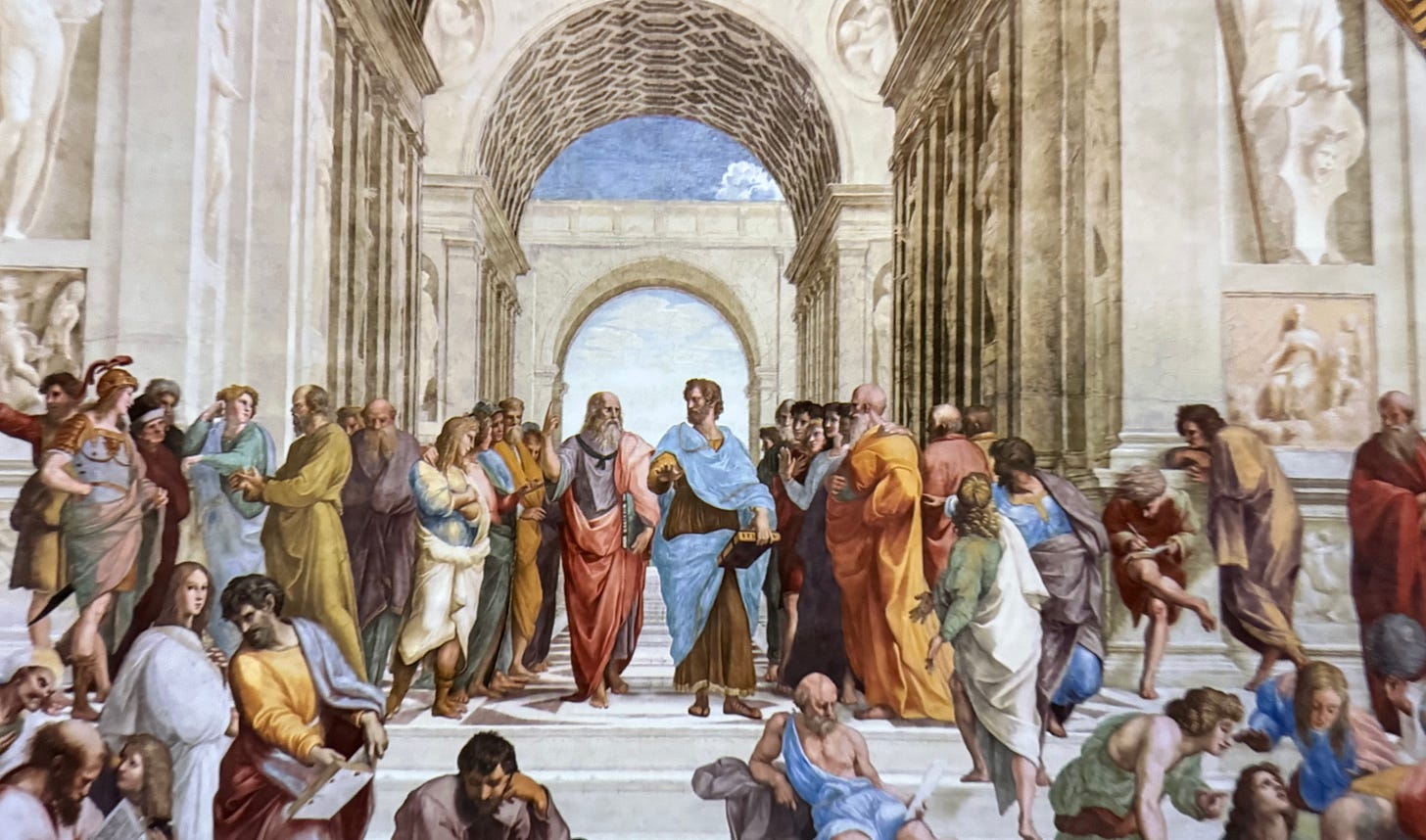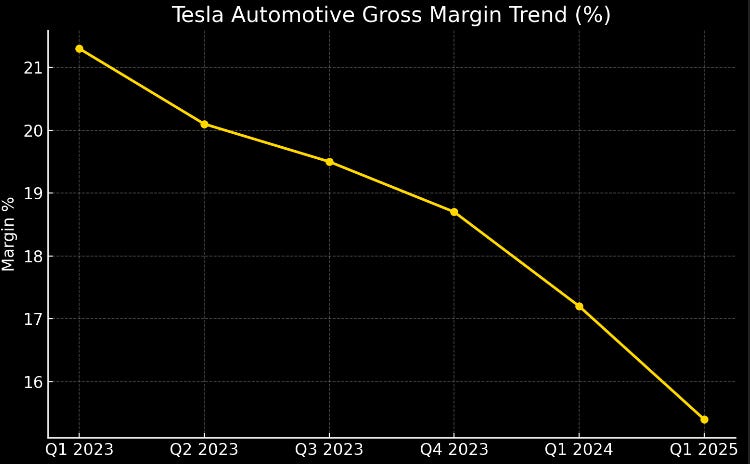Tesla RoboTaxi Launch: Illusion vs. Reality
Why Elon Musk's Self-Driving Demo Is Falling Behind Waymo and Zoox
The Renaissance Lens: Raphael and the Illusion of Beauty “A good painter can make a bad painting look good, but a bad painter cannot make a good painting look bad.” — Raphael
This quote encapsulates the Renaissance ideal that mastery lies not in the subject, but in the artist's ability to elevate it. Raphael exemplified this in works like The School of Athens (1511), where he orchestrated a harmonious balance of architecture, figures, and philosophy into a perfect composition.
Contrast that with the less successful Vision of Saint Jerome by Parmigianino (1527), which, though ambitious, was widely criticized for its awkward proportions and disjointed narrative.
These two paintings underscore the difference between illusion as genius and illusion as failure. In the High Renaissance, the artist Raphael stood apart for his uncanny ability to transform flawed reality into idealized beauty. As Giorgio Vasari wrote, Raphael could take the best elements of nature and compose something even more perfect than nature itself. Renaissance artists weren’t just painters; they were masters of perception—curators of what reality shouldlook like. Their job was not simply to copy, but to elevate. This power of perception, to render the imperfect beautiful, was the highest form of artistic genius.
The Modern-Day Exhibition: Tesla’s RoboTaxi Reveal
Fast forward to today, and Tesla takes center stage once again. Elon Musk has just unveiled the long-awaited beta of the Tesla RoboTaxi service, presented with cinematic visuals, curated influencer testimonials, and a fleet of sleek, futuristic-looking Model Ys. On the surface, it appeared as though the future had finally arrived—after years of promises and shifting timelines.
But just as Raphael could use his brush to elevate an imperfect subject into a masterpiece, Musk has similarly painted a picture of autonomy that, while visually stunning, conceals a far less complete reality.
Elon Musk is a master of perception—an unparalleled storyteller in the financial world. The RoboTaxis were marketed as revolutionary, but the reality is far more constrained: age limits were put into place ( 18 and older), speeds were capped around 55 mph, operations were limited to small residential geofenced areas, and the vehicles couldn’t function in bad weather or on highways. What looked like full autonomy was, in fact, heavily monitored beta testing.
This wasn’t a product ready for market—it was a short-term illusion designed to captivate headlines and inject momentum into a stock that’s otherwise facing mounting pressures. A beautiful painting of a future that, for now, still exists only in theory.
Behind the Curtain: What's Really Under the Hood
Tesla’s supposed RoboTaxis came with significant caveats: human safety drivers were in the vehicle, operation was restricted to small geofenced areas, the cars only functioned during specific hours of the day, and they required kill switches and remote operator backups for emergency scenarios. The vehicles shown to the public were not CyberCabs as previously announced in 2024, but rather souped-up Model Ys with special hardware and software not available in any customer car today. This was not a mass-market launch. It was a limited beta demo.
The Missing CyberCab and Regulatory Illusions
Back in October, Elon Musk announced the CyberCab, a ground-up autonomous vehicle platform that he claimed would launch in 2025, and he said existing Tesla owners could turn their cars into money-making RoboTaxis. But what was demonstrated this week bore no resemblance to that vision. In fact, it exposed the deep regulatory and technological gaps still facing Tesla.
The State of the Law: Texas Closes the Gap
Musk’s promise hinges on one assumption: that regulators will approve Tesla’s autonomous software and hardware for widespread use. But here's the problem—the company is still operating at Level 2 autonomy. Most U.S. states require Level 4 for driverless taxi services. Texas, once the final regulatory Wild West, just passed new legislation effective September 1 mandating DMV approval for all autonomous vehicles, including proof of Level 4 capability. This closes the last loophole Tesla relied on.
The Competition: Waymo and Zoox Surge Ahead
Meanwhile, Waymo (owned by Google) is already running fully driverless services in major cities including Phoenix, San Francisco, Los Angeles, Austin, and Miami. As of Q2 2025, Waymo vehicles have logged over 20 million miles in autonomous mode on public roads and over 1 billion miles in simulation. Waymo currently operates over hundreds of autonomous vehicles and plans to scale to 1,000+ vehicles by the end of 2026. We published data on how to play Google via options in a previous report
( HERE )
Zoox, Amazon's autonomous subsidiary, has tested its custom-built driverless vehicle in Las Vegas and Foster City, California. Zoox's vehicle achieved Level 4 autonomy and is approved for non-disruptive public road testing. The company aims to roll out commercial services by 2026.
Tesla, in contrast, has logged only fewer than 500,000 miles in supervised FSD Beta mode and has no documented Level 4 testing miles on public roads as of June 2025.
The Numbers Don’t Lie: Tesla's Financial Standing
From a financial standpoint, investors should be cautious. Tesla stock may have popped on the announcement, but it remains down -8% year-to-date, off -15% from January earnings, and -30% below its December 2024 highs. Despite that decline, the stock now trades at a price-to-earnings ratio over 200, compared to the S&P 500 average of 24.
Tesla’s net income fell 23% year-over-year in Q1 2025, while automotive gross margins declined to 15.4%, down from 21.3% a year earlier.
Keep reading with a 7-day free trial
Subscribe to The Coastal Journal to keep reading this post and get 7 days of free access to the full post archives.










